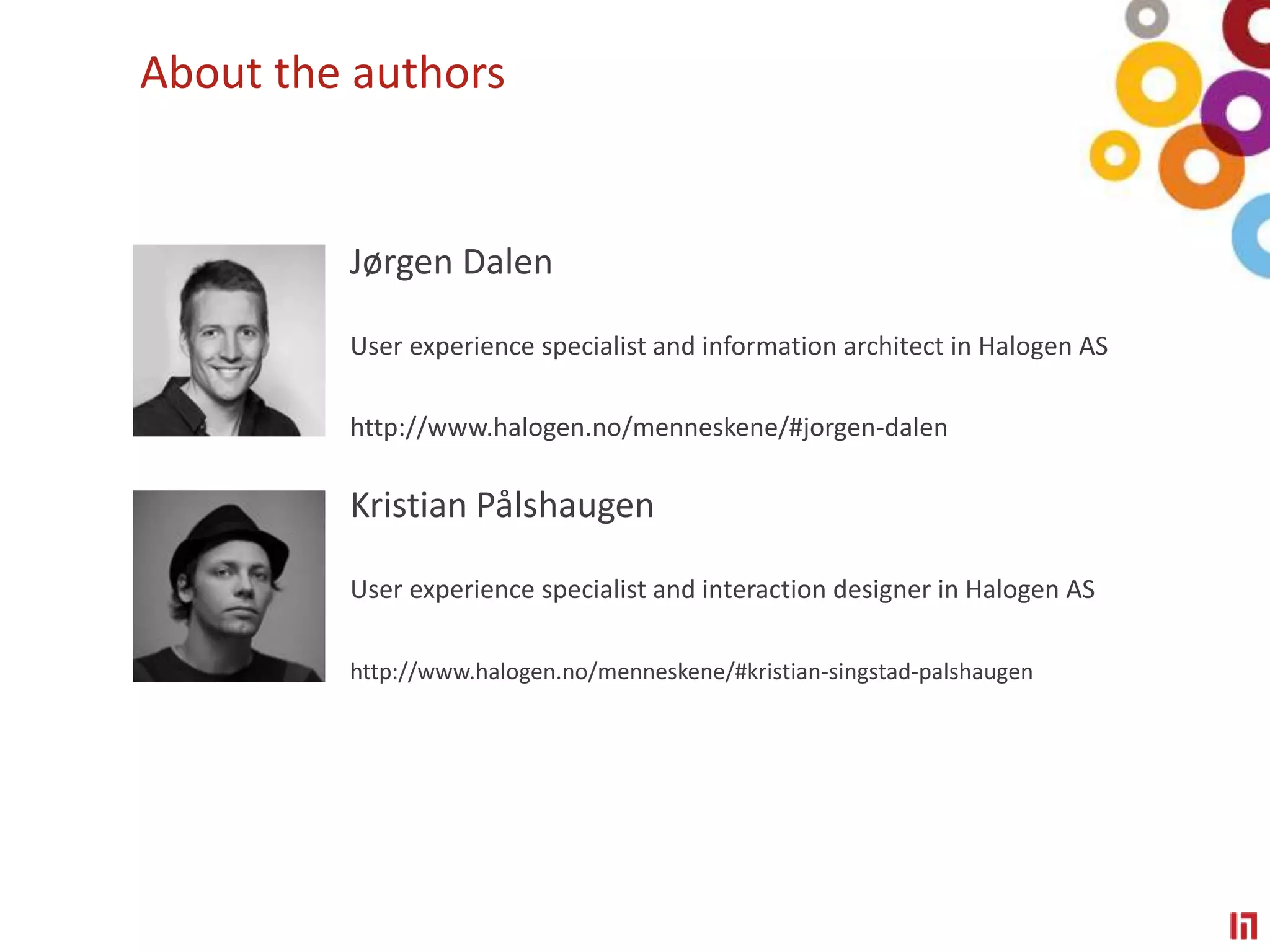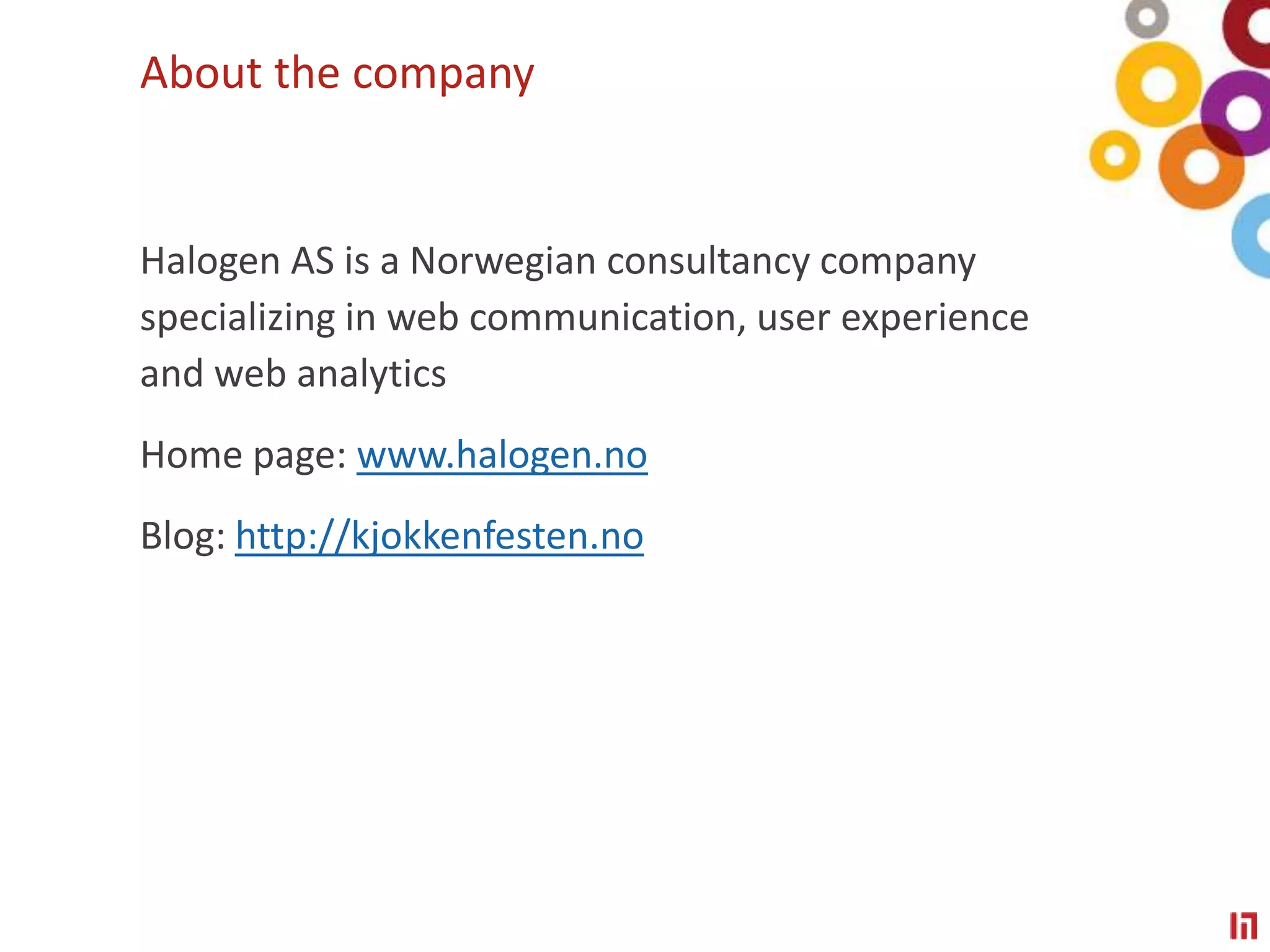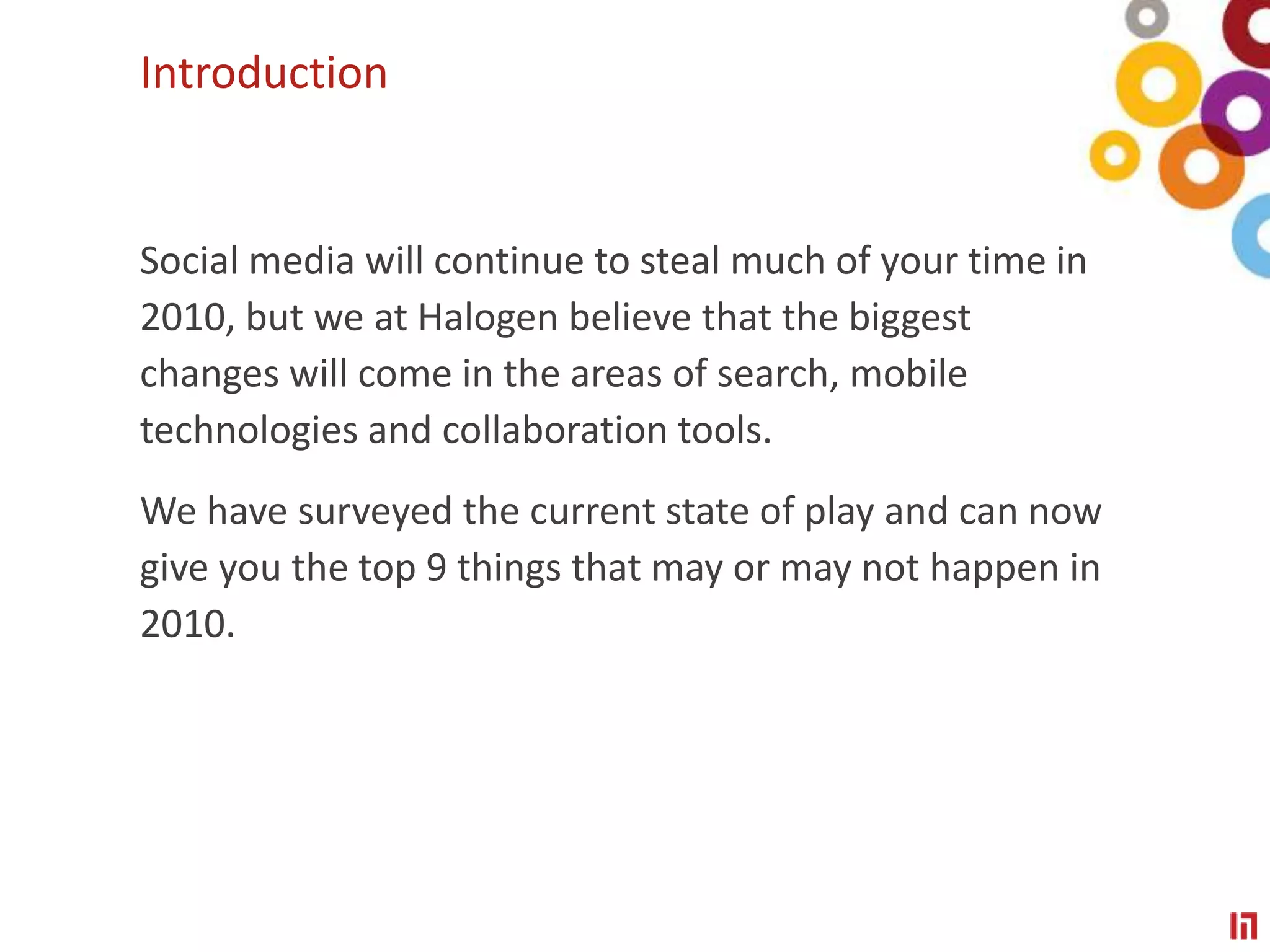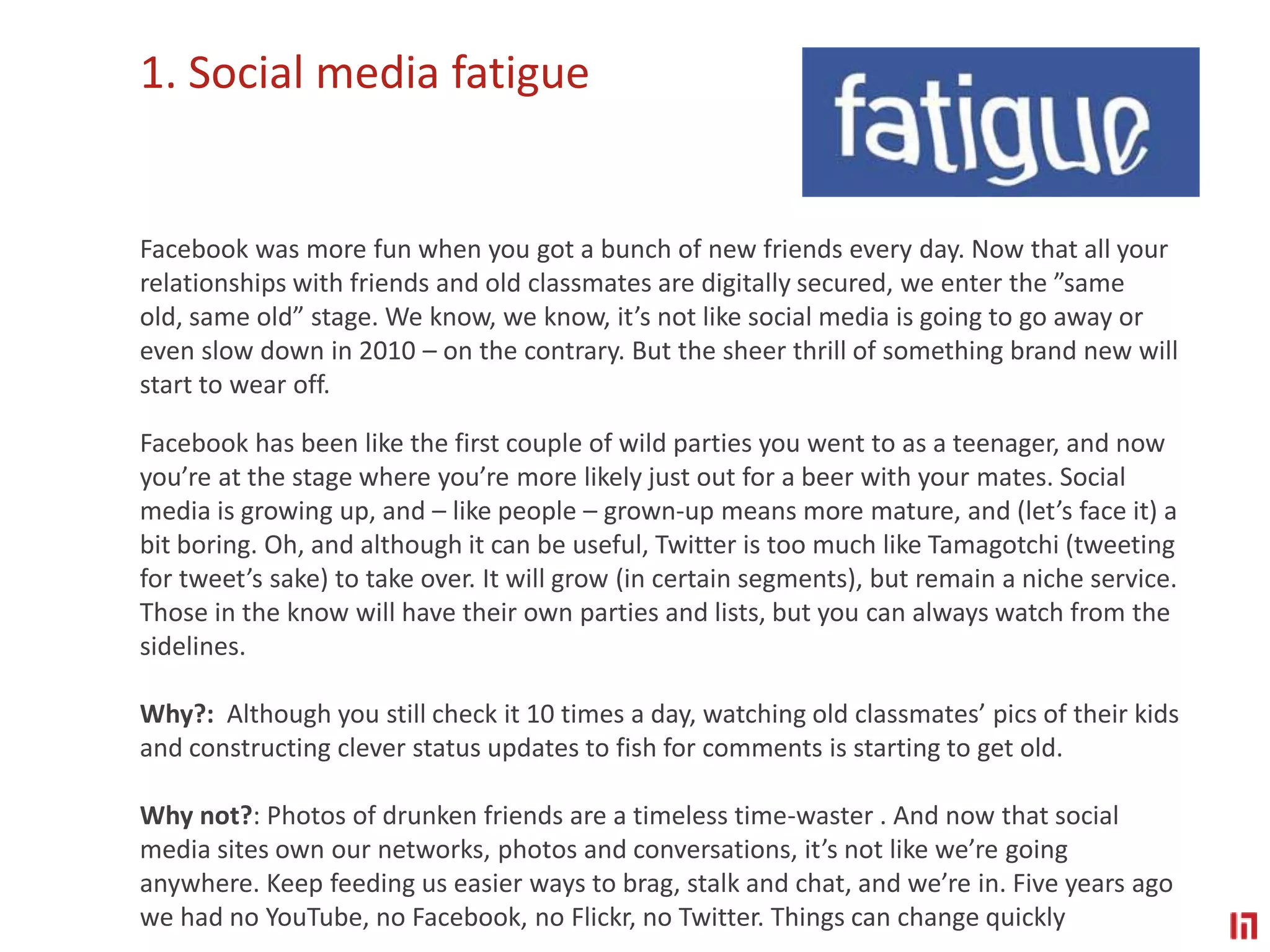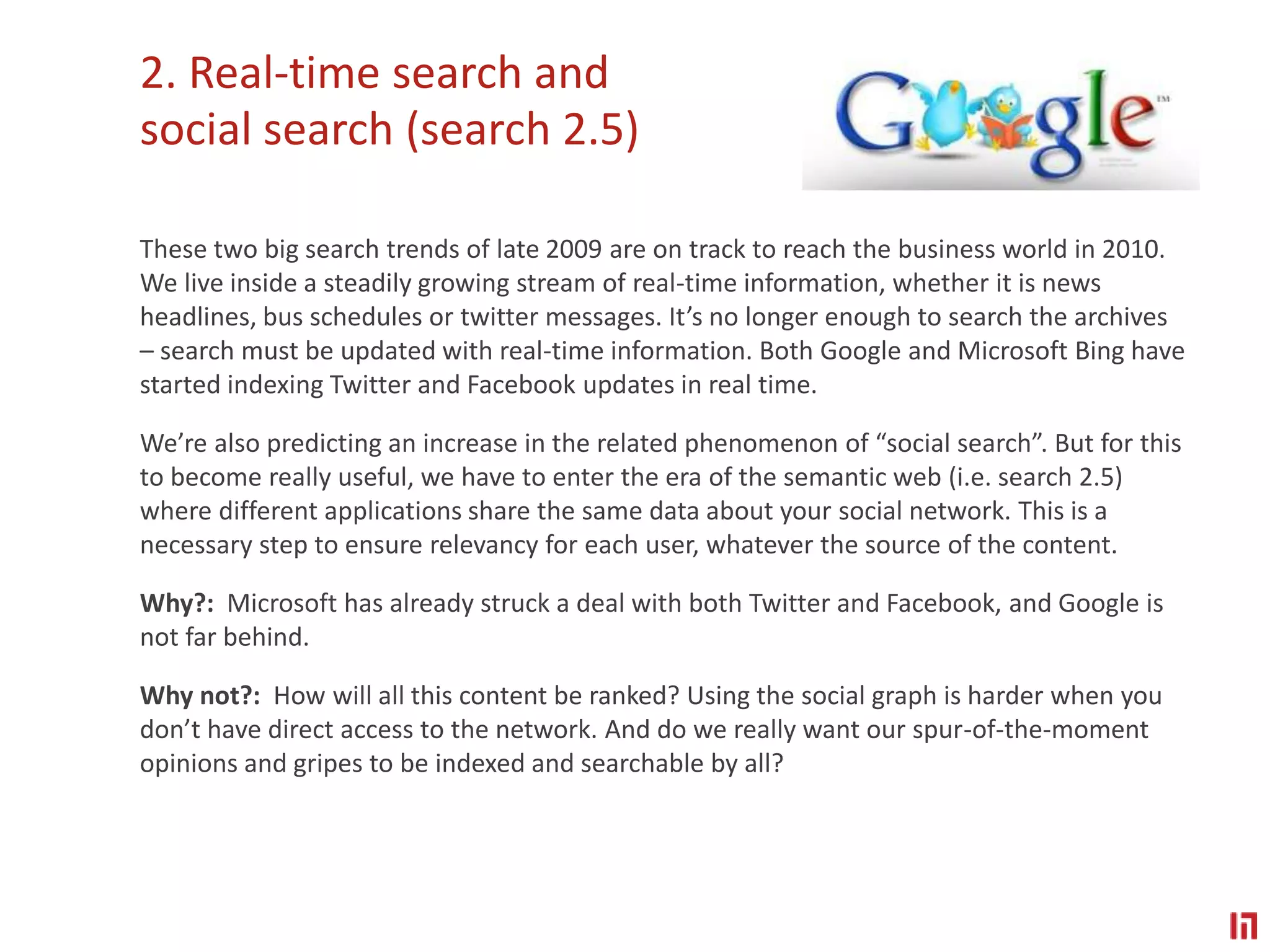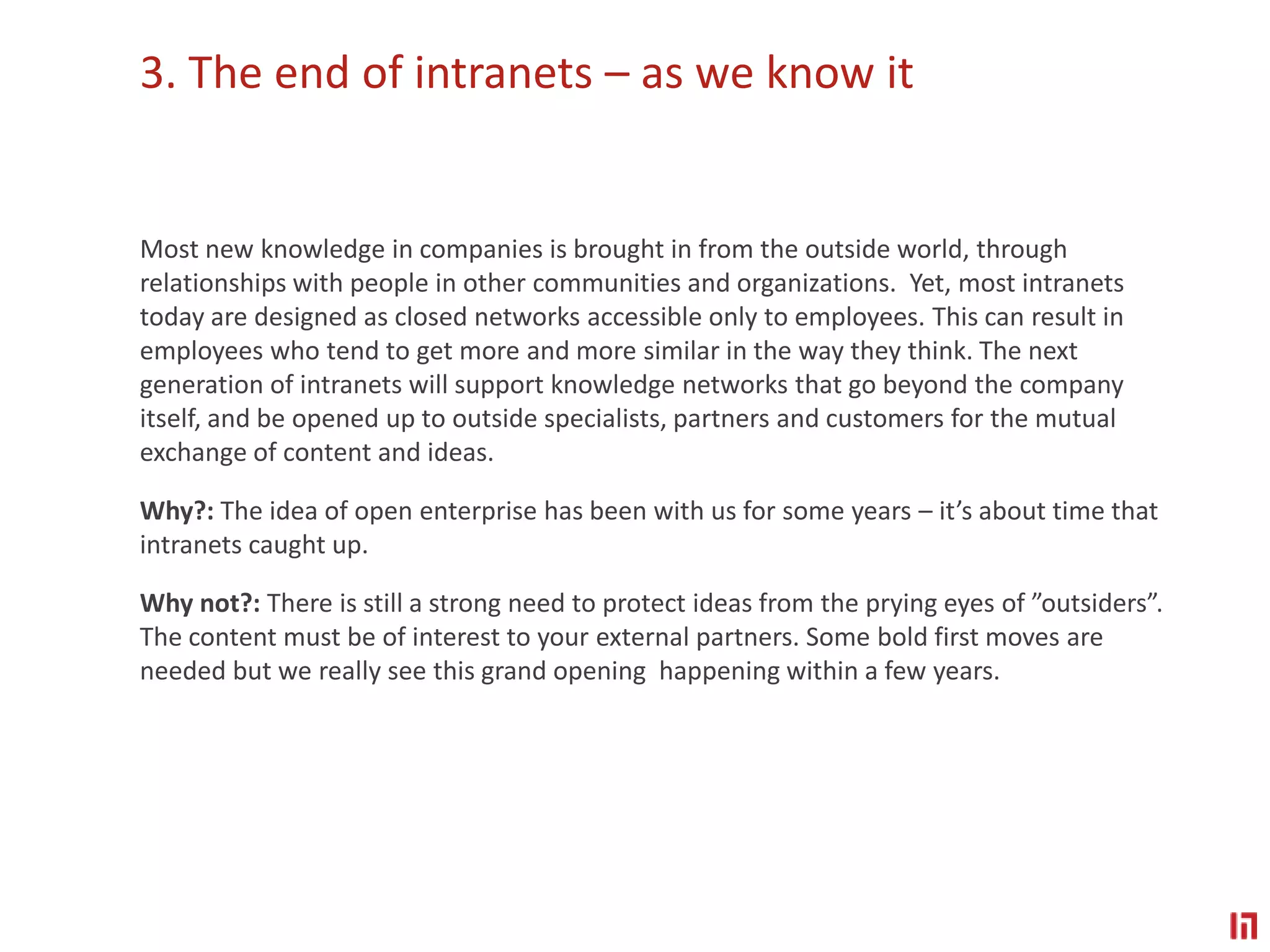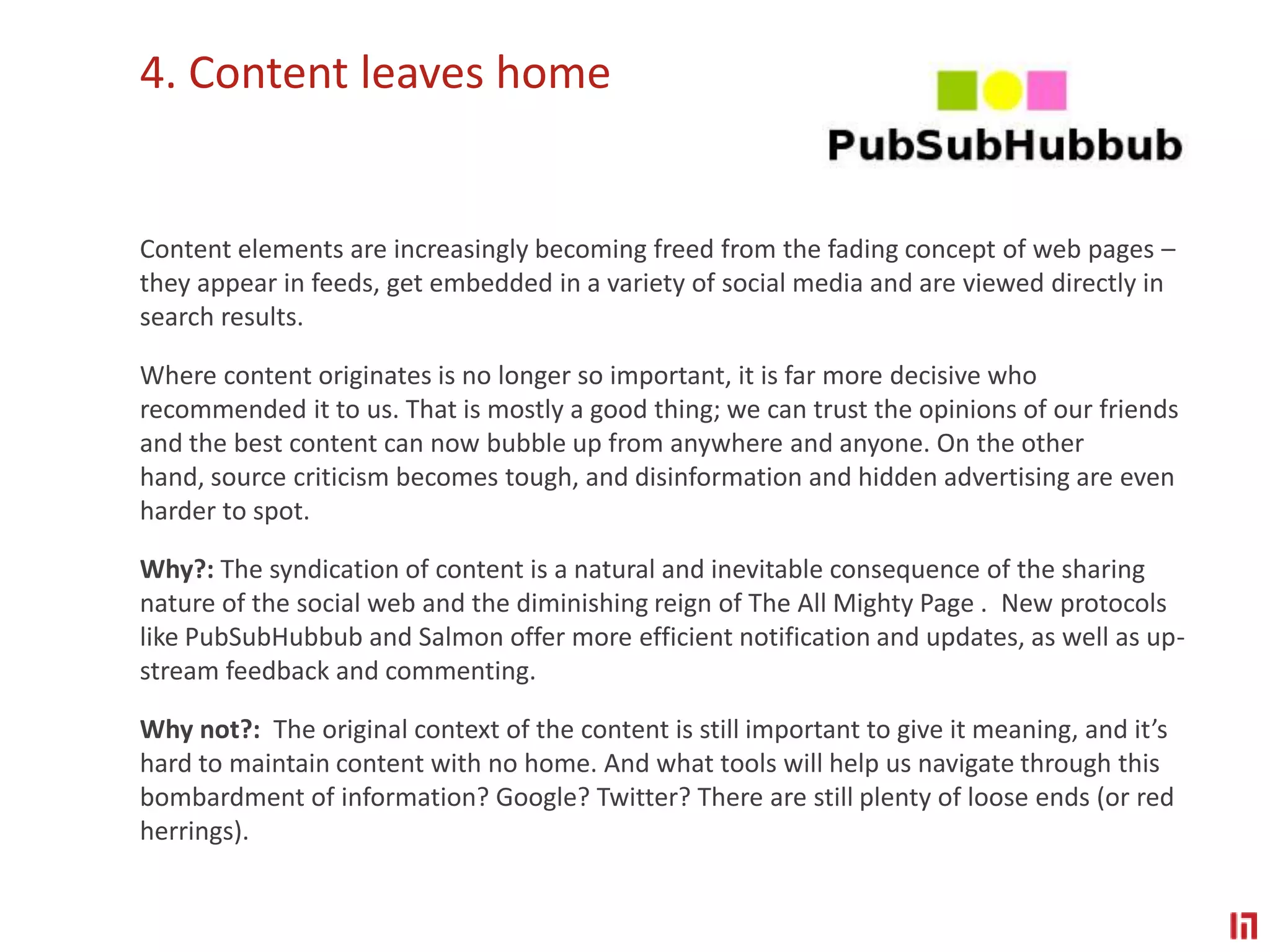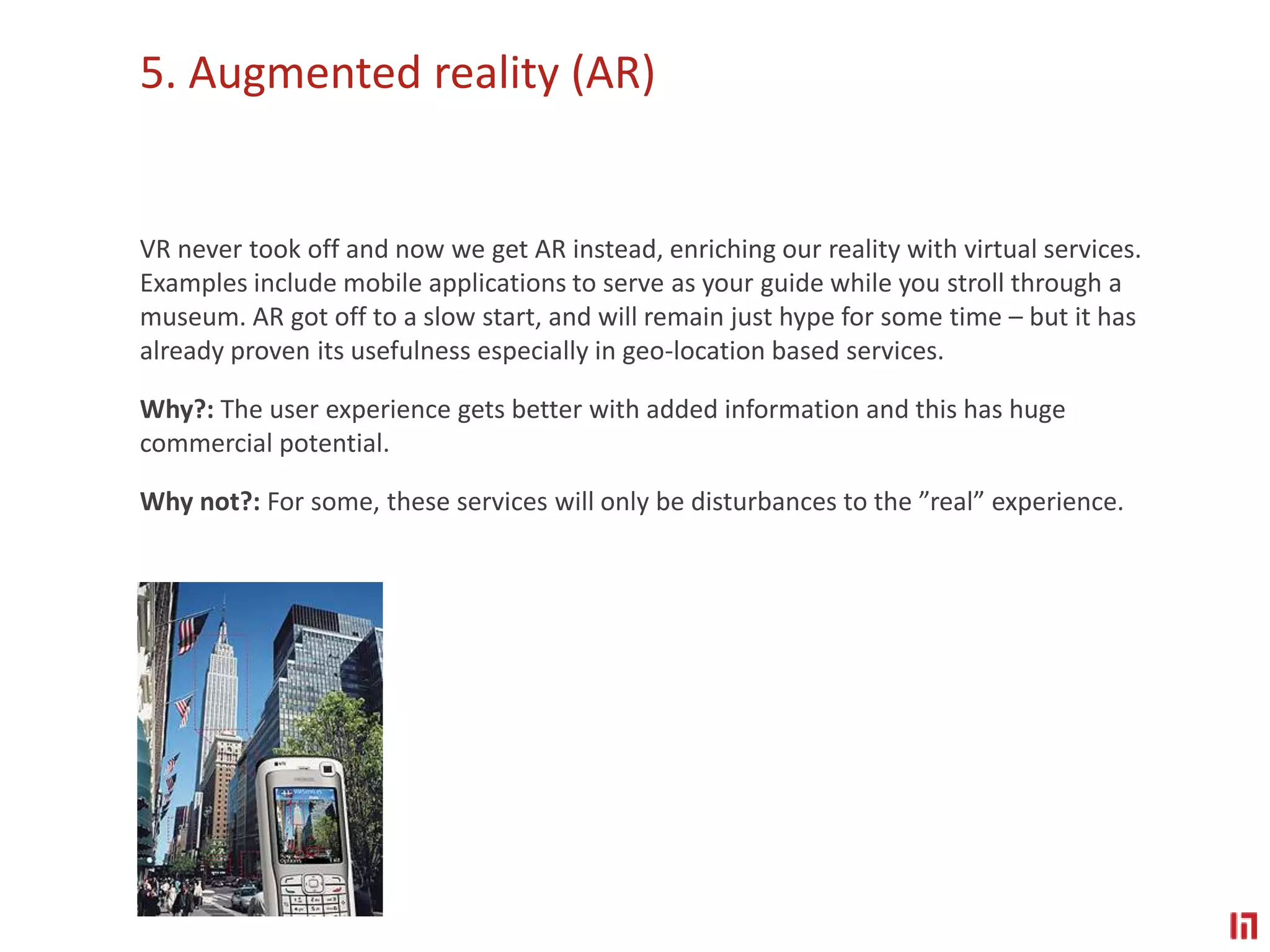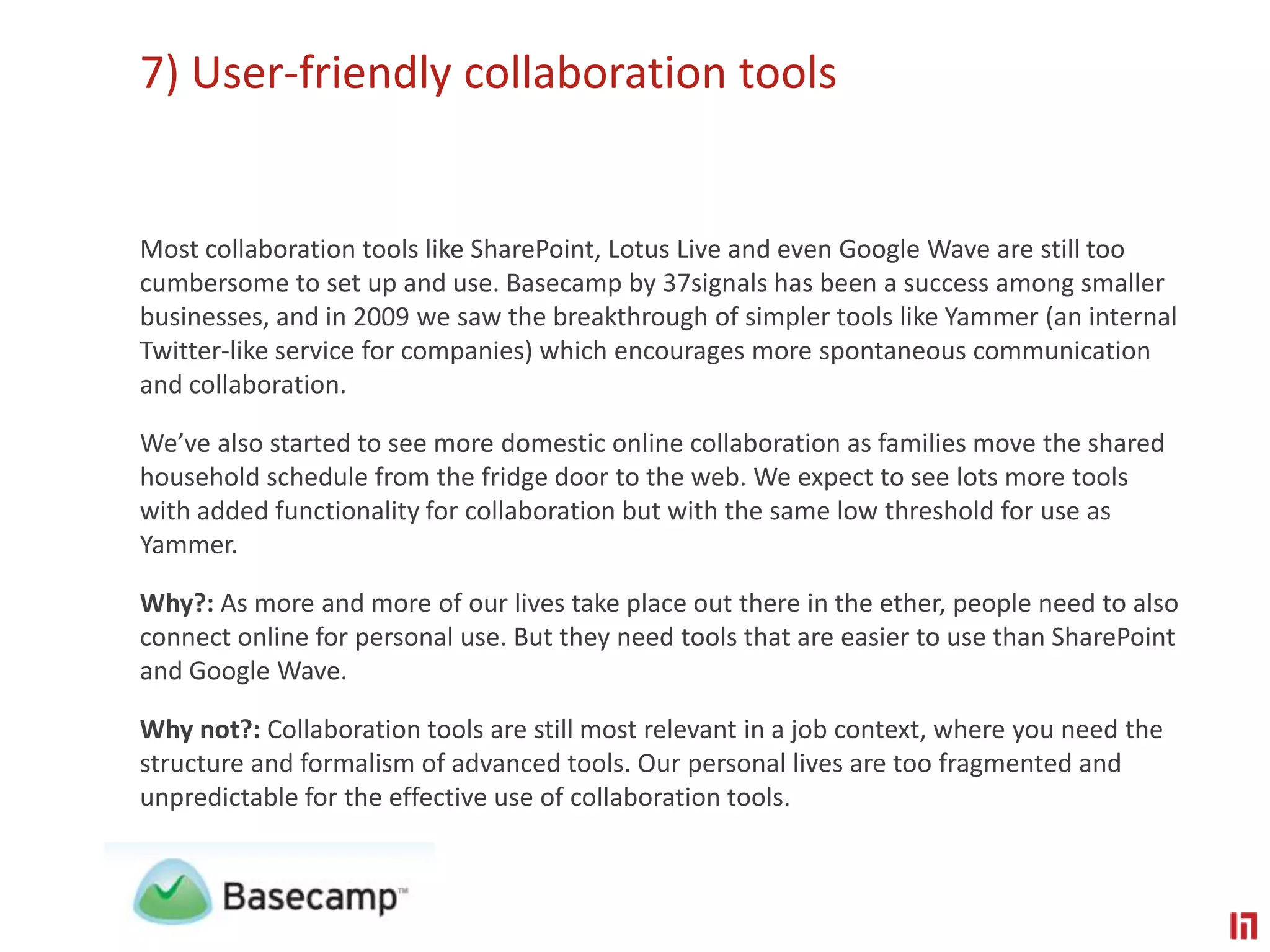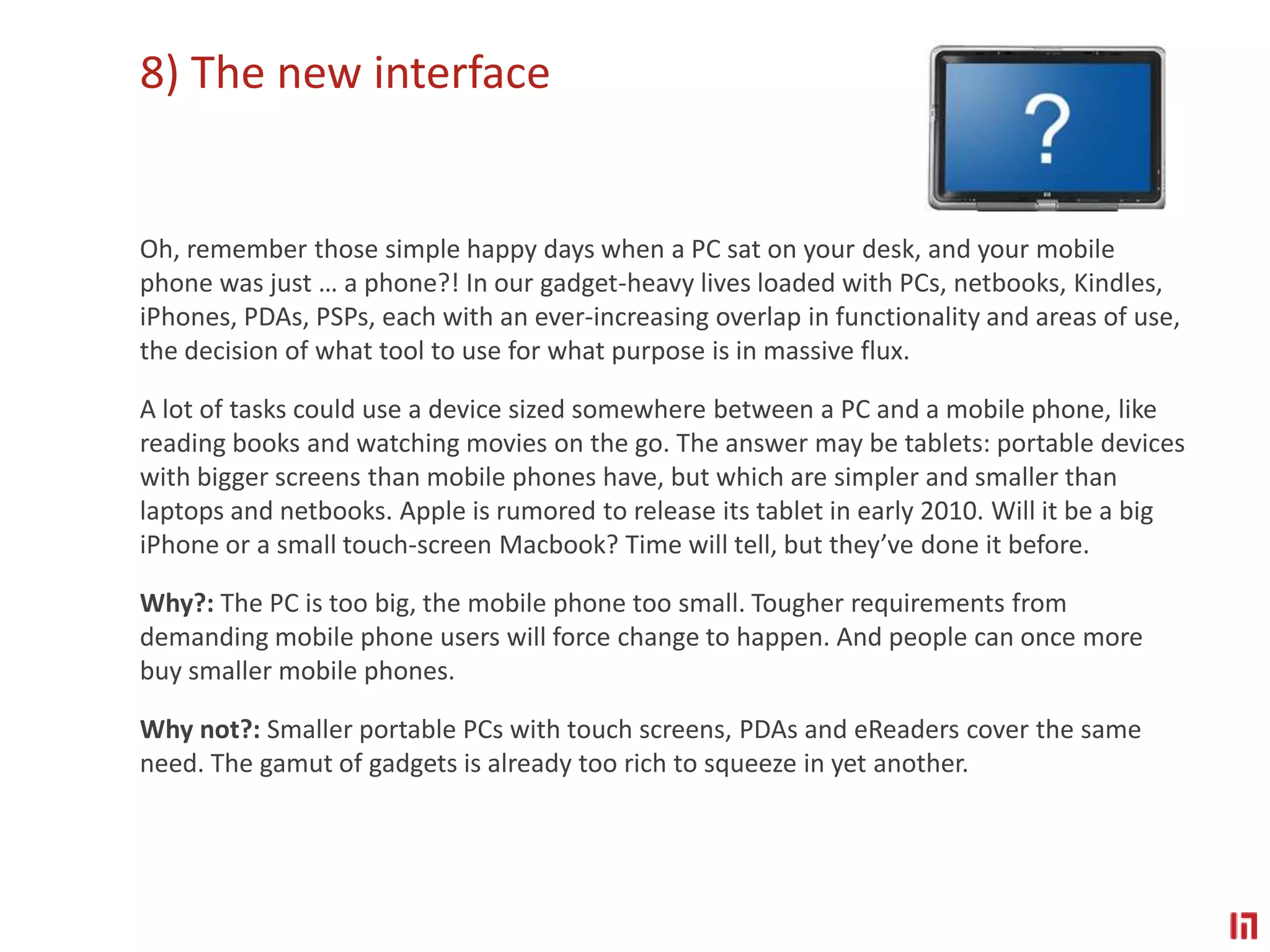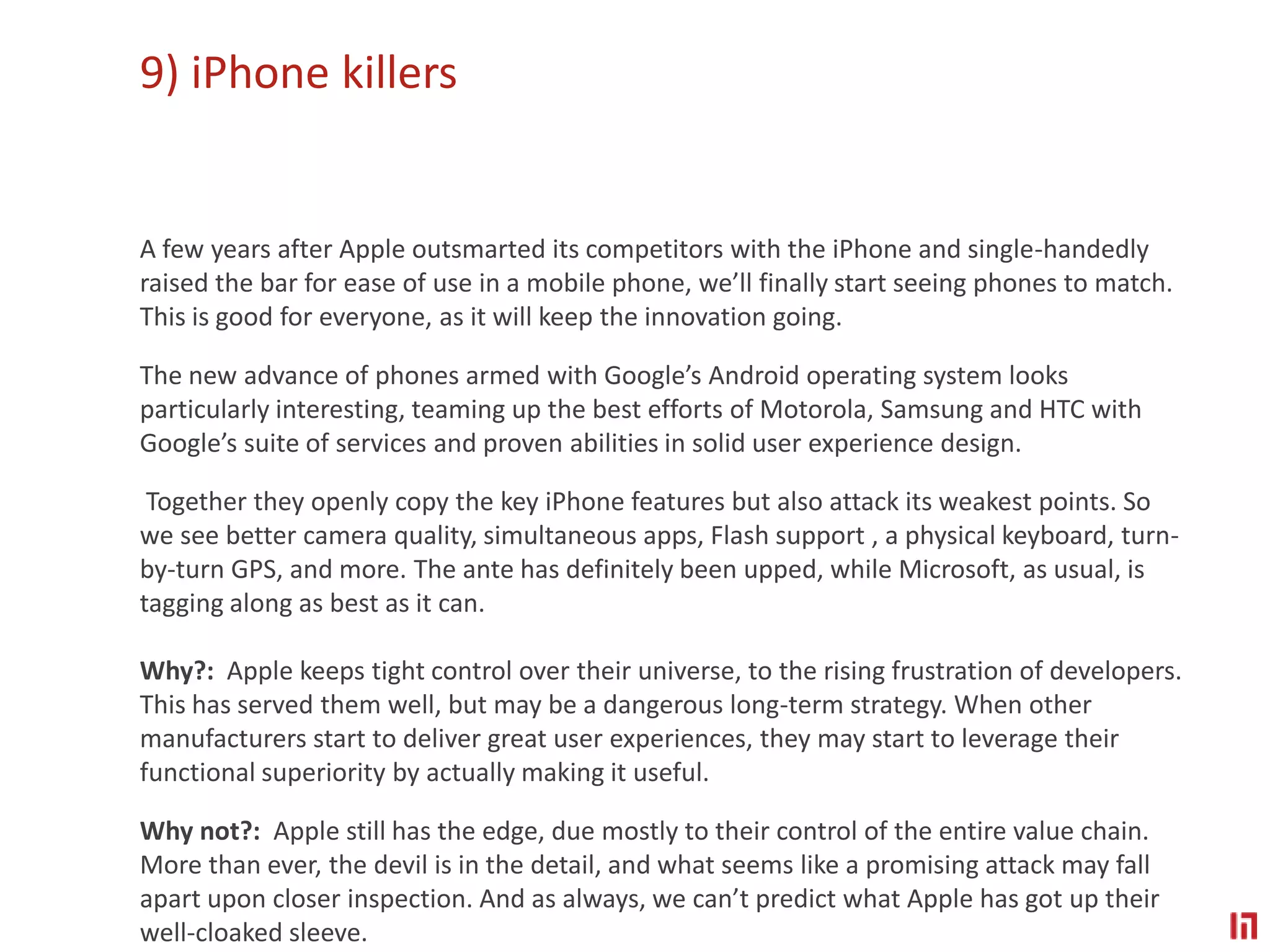The document discusses 9 digital trends that may occur in 2010, according to experts Jørgen Dalen and Kristian Pålshaugen. The trends include: 1) social media fatigue as networks mature, 2) growth of real-time search and social search, and 3) intranets becoming more open knowledge networks beyond just employees. Tablets are also predicted to emerge as a new interface between phones and laptops. Competition from phones using Google's Android platform may challenge the iPhone's dominance.

